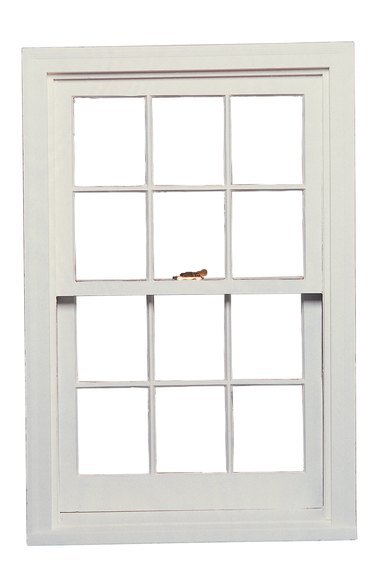 J-channels often are used around exterior windows. Image Credit: Comstock/Comstock/Getty Images
J-channels often are used around exterior windows. Image Credit: Comstock/Comstock/Getty Images
Although vinyl siding does have its benefits, improperly installed siding and trim can cause a lot of problems. Vinyl siding is designed as an exterior cladding only, and is supposed to be installed over other materials, such as a weather-resistant barrier. Vinyl is a potentially leaky material, and water trapped behind siding leads to decay and mold. If an installer uses a material such as incorrectly, this only exacerbates the problem.
J-Channels
A J-channel looks like its name, resembling the letter "J" when viewed from the side. The top of this trim has small holes that allow it to be attached to a substrate without drilling into the vinyl. The bottom curves around, hiding the end of a piece of vinyl siding. J-channels typically are used to hide the ends of siding as it butts up against windows, doors or similar objects.
Trapping Water
The problem with J-channels is that when improperly used or installed, they trap water, and can provide an entry point for water to get behind the siding. This is most prominent in J-channels that run horizontally, such as trim running along a window frame. Water runs down the siding and can collect in the J-channel. If there is no way for it to drain, the channel holds this water, along with any dirt that was on the outside of the house. Significant water buildup can lead to leakage behind the channel and siding.
Preventing Water Damage
There are a couple of ways you can prevent damage to your home. Vinyl should always be installed over some kind of underlayment that helps to waterproof your house, or a weather-resistant barrier. While this won't drain clogged J-channels, it can prevent water from getting into the house itself or rotting the material below the siding. J-channels also may have flashing installed beneath to prevent water from entering. Another technique to try is adding caulk along the J-channel seams and where the closed side of the channel abuts other materials, such as window and door trim.
Draining
J-channel molding needs some method of drainage to prevent water buildup and damage. There are a couple of ways to go about this. The ends of J-channels should be mitered, which helps with drainage and can prevent water from entering in the first place. Horizontal channels that face upwards, such as those above doors and windows, should have their flanges lap down over the neighboring side channels to provide a path for water. In some cases, channels need small holes punched through their edges to allow water to escape.


